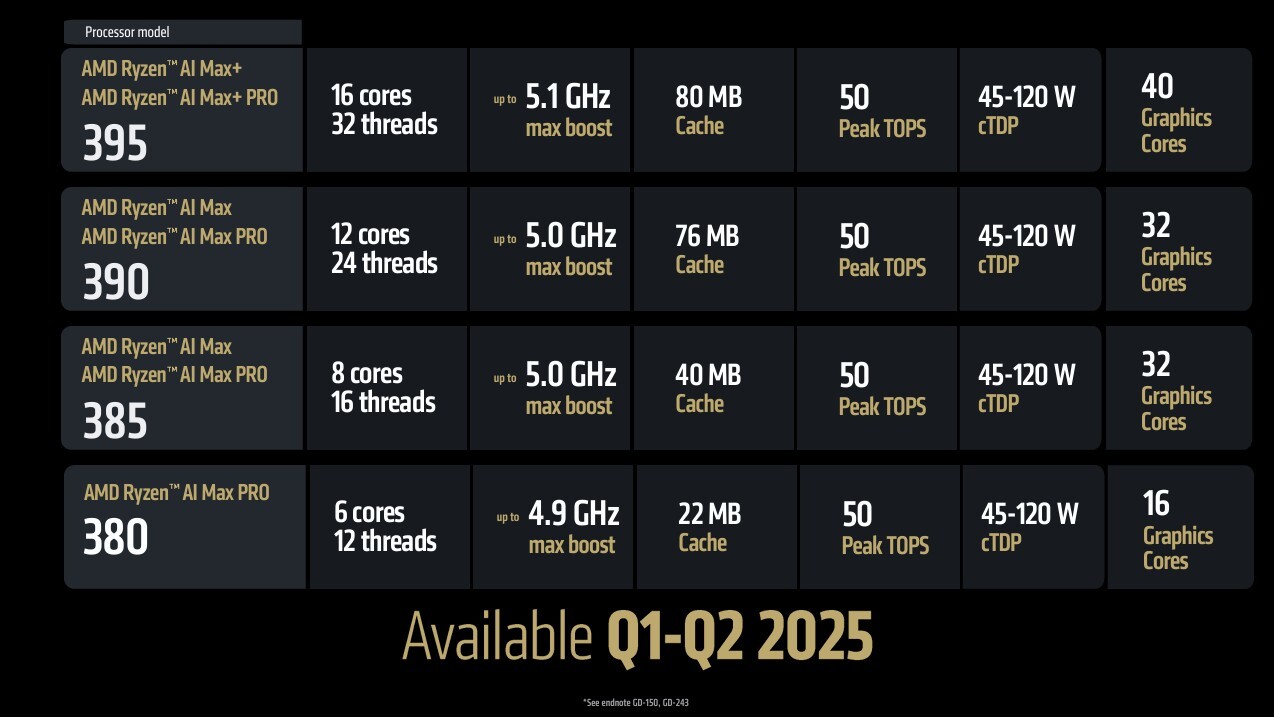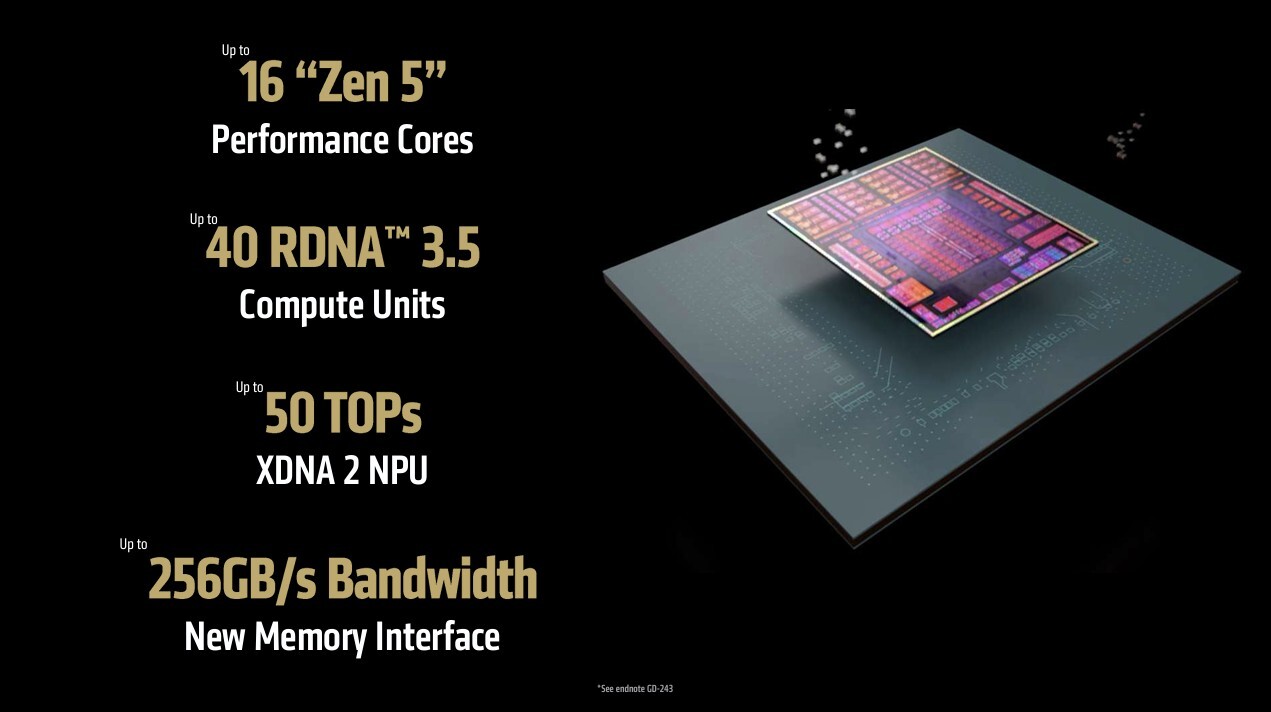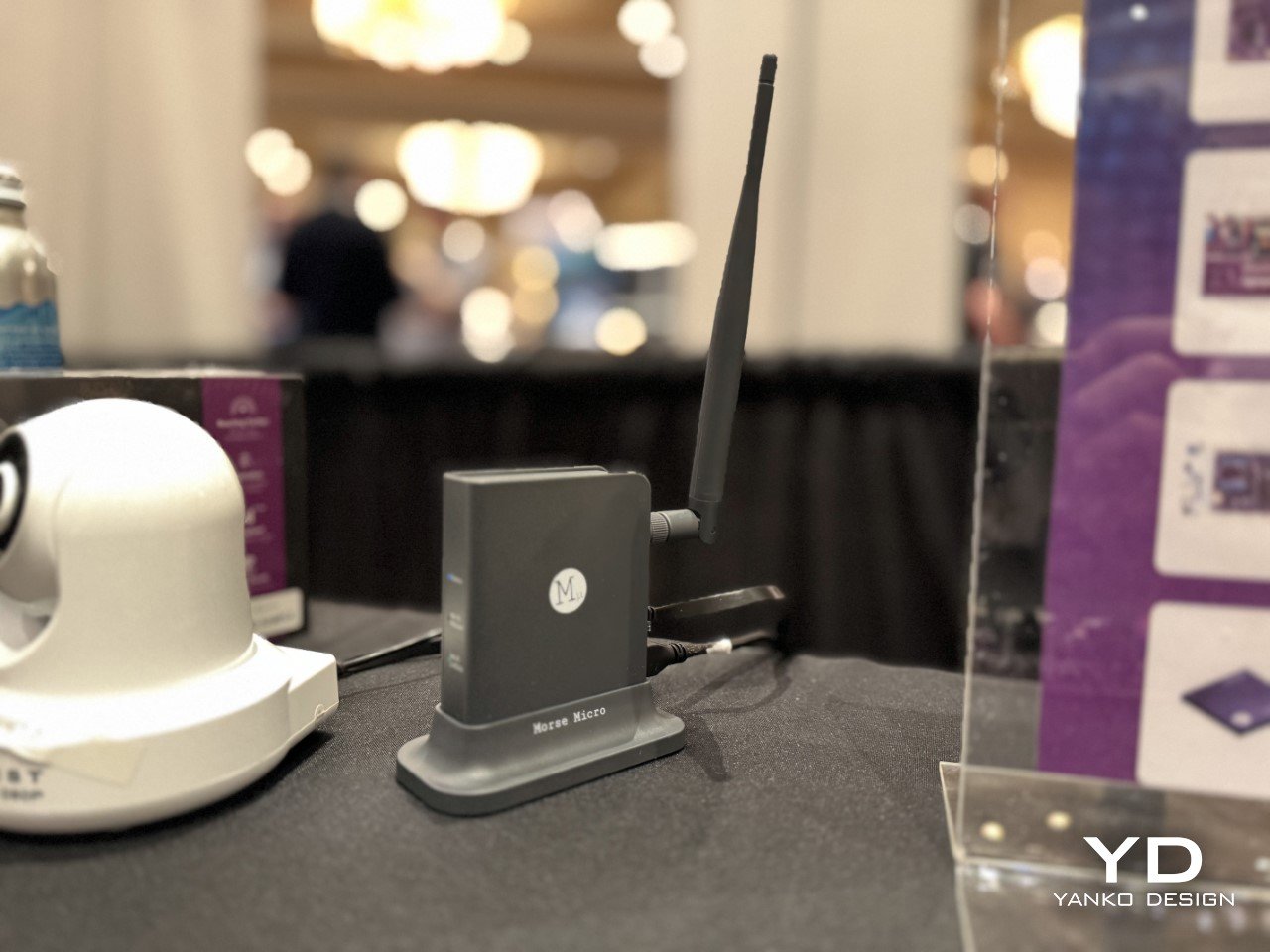Quick Cyber Thoughts: CES 2025 Aftermath

The Consumer Electronics Show ended last week, and I made a list of things to keep an eye out for that touch on cybersecurity issues.
So it's time to see if any of those things became reality!
Table of Contents
Powerful APUs with Lots of AI Capability

This was pretty much a gimme, mostly because I kept abreast of leaks and analysis of what the processor manufacturers were doing.
AMD announced the "Strix Halo"/AI Max(+) processor line for workstation laptops and miniPCs. These processors are basically one or two chips of CPU cores next to a bigger chip that has an Neural Processing Unit for AI, a Graphics Processing Unit that can also be used for AI, and all the input/output for the whole package. What this means that if you can give this thing enough RAM, you can run a lot on this chip.

With the right software and enough memory, you could easily run multiple VMs, including Kali Linux, while doing AI tasks using larger models, with up to 96GB of memory just for AI.
These will be expensive machines, but if you need/want to do a lot of VM and/or local AI work in a compact system, they're going to be the go to option. Intel doesn't have anything close, and Nvidia might, but they're stuck dealing with Windows on ARM. Reworking Windows to work in a different microarchitecture hasn't worked out well, so it's Ryzen AI Max or nothing.
A concerning observation is the fact that none of the systems advertised to use these APUs will use CAMM2 memory modules. It is unclear why this is the case, but it might behoove individuals and small organizations to wait to see if AI Max(+) laptops and miniPCs are sold with the better memory technology.
Business as Usual for Routers
One thing that concerned me going into 2025 was the potential for a TP-Link router ban. Like many other Americans, I use TP-Link routers because they provide a compelling feature set at an affordable price. This is especially true in the mesh router space, where they cost quite a bit less than competing products from brands like NetGear and Asus.
To be extremely fair to all involved, this was before the United States Supreme Court ruled that the TikTok ban was constitutional:
The Supreme Court on Wednesday unanimously upheld a federal law that will require TikTok to shut down in the United States unless its Chinese parent company can sell off the U.S. company by Jan. 19. In an unsigned opinion, the justices acknowledged that, “for more than 170 million Americans,” the social media giant “offers a distinct and expansive outlet for expression, means of engagement, and source of community.” But, the court concluded, “Congress has determined that divestiture is necessary to address its well-supported national security concerns regarding TikTok’s data collection practices and relationship with a foreign adversary.”
The problem is that the router industry apparently decided to keep on going like nothing was happening. Aside from price tweaks on existing products, which are done on an individual store level, the major players in the Small Office-Home Office (SOHO) space just introduced new, expensive routers. Theoretically, these would provide downward price pressure on older products. In reality, the trend in some segments of consumer electronics is that things are kept the same price and new "premium" price tiers are added on top.
There also didn't appear to be any talk about the software side, which would be the low cost solution (replacing the existing TP-Link OS/firmware). The existing open source options don't cover the full range of TP-Link offerings, so at this point, a worst case scenario is an expensive replacement of all TP-Link routers.
Things I Didn't Expect

Something I didn't expect to see was a technology that could push WiFi range to around 10 miles:
Without getting into the specifics (because I have no technical background), the Wi-Fi HaLow router (shown above) promises to make internet connectivity seamless over massive distances. It relies on Sub-GHz frequency waves that travel long distances (like AM and FM radio) to transmit internet connectivity, so you could potentially use your home Wi-Fi router within a 10-mile radius of your house.
Morse Micro, the company behind the tech, hopes that this Wi-Fi capability will coexist with current 2.4Ghz and 5Ghz Wi-Fi bands. These existing bands are great for low-latency internet connectivity, but add HaLow to the mix and you get long-distance connectivity too, giving you the best of all worlds. Sub-GHz Wi-Fi won’t ever be as fast as 5GHz Wi-Fi (HaLow has max speeds of 32.5 MB/s), although those speeds are perfect for most everyday tasks like checking email, browsing the internet, or even for IoT devices to communicate with each other.
While this has a number of practical applications, this does add a whole host of security concerns. WiFi HaLow is going to be an enticing target for hackers, given the increased range and therefore greater geographic opportunities for direct hacking. Properly configuring and testing these systems is also going to be a bit of an ordeal, given that they haven't been standardized yet.
Another surprise came from the VLC open source media player team:
At CES 2025, non-profit organization VideoLAN announced that their open-source media player app VLC Media Player crossed an incredible milestone: over 6 billion downloads, TechCrunch reports.
According to a LinkedIn post written by VideoLAN’s president Jean-Baptiste Kempt, the user base for VLC continues to grow despite the ubiquitous popularity of streaming services.
To celebrate its undying popularity, VideoLAN demoed at CES 2025 an upcoming feature for VLC Media Player that uses generative AI to automatically create subtitles on the fly based on the media content being played, and can even translate across languages in real time.
The feature will use open-source AI models that can run locally on the user’s device without having to connect to the internet. This is a huge deal for anyone who consumes foreign-language content, who’s hard of hearing, or simply prefers subtitles while watching. And it’s especially nice for users who still rely on VLC to do things that many other video player apps can’t do, like play DVDs on PC for free.
It'll be interesting to see how VLC accomplishes this AI integration. On one hand, these models need to be able to run with decent performance on a wide range of systems, including ones that potentially have nothing more than integrated (and therefore weak) graphics. On the other, VLC needs to integrate robust safeguards to prevent the AI from being used to execute malicious code and actions on the user's system.
If anything would promote the use of local AI, it would be VLC.
The Other Things
Sadly, there wasn't much progress on two other things I wanted to see. Ventiva's solid state cooling system did get a demo system built by Dell, which could mean that we could see industry adoption down the line. Dell did create the first compression attached memory modules, which then became CAMM2 memory, so it's not impossible.
But it does mean that we currently still have to worry about cooling fans, from a security and maintenance point of view.
Perhaps most disappointing to me was the lack of progress on improving price per gigabyte or terabyte in storage. Network Attached Storage vendors did improve their offerings with new designs and even AI integrations, but nothing for the storage itself.
The root cause of not having backups is often cost, and without addressing that, we're not going to be able to grow the culture of proper backups. While off-site backups are definitely a part of a proper backup system, the fact that on-site backups are priced out of most people's ability to stand up a solution is a grim reality.

